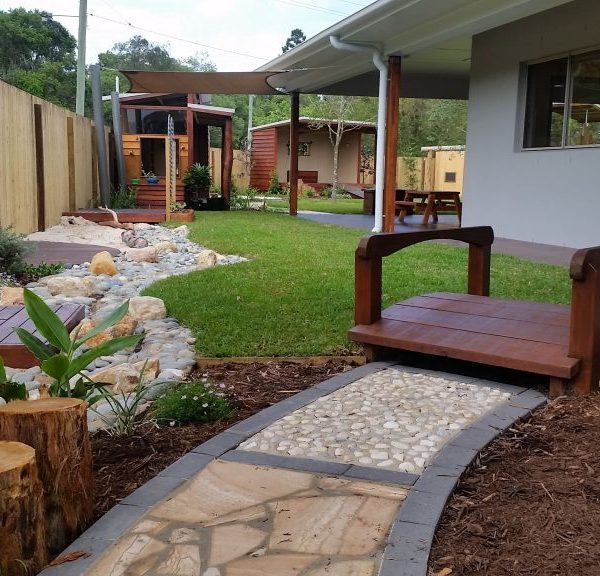NQF Snapshot: 91% of services rated Meeting NQS or above for fourth consecutive quarter

The latest National Quality Framework (NQF) Snapshot shows that 91 per cent of children’s education and care services are rated Meeting National Quality Standard (NQS) or above marking the fourth quarter in a row the sector has maintained this result.
Published quarterly by the Australian Children’s Education and Care Quality Authority (ACECQA), the NQF Snapshot provides a national overview of education and care services operating under the NQF, including quality ratings against the NQS.
The report reflects the sector’s continued commitment to high-quality early learning and care, despite ongoing workforce and operational challenges.
As of Q2 2025, 18,018 approved services are operating under the NQF, up 2 per cent from the same quarter in 2024.
- Centre-based services make up 98 per cent (17,606 services), with family day care representing 2 per cent (412 services).
- Long day care accounts for 53 per cent of services nationally, followed by outside school hours care (28 per cent) and preschool/kindergarten (17 per cent).
- NSW has the largest share of approved services (34 per cent), ahead of Victoria (27 per cent) and Queensland(18 per cent).
- The sector is predominantly private for profit (54 per cent of services), with private not for profit community managed services representing 19 per cent.
- Most providers (79 per cent) operate a single service, but large providers (25 or more services) account for 36 per cent of all approved services.
Assessment rates remains high, with 93 per cent (16,717) of services having received a quality rating, of these:
- 91 per cent (15,215 services) are rated Meeting NQS or above.
- 70 per cent are rated Meeting NQS, 20 per cent Exceeding NQS, and 9 per cent Working Towards NQS.
- Less than 1 per cent (11 services) are rated Significant Improvement Required.
- 26 services hold the Excellent rating.
The revised NQS, introduced in February 2018, made achieving an Exceeding NQS rating more challenging. Since then, the proportion of services at this level has stabilised around 20 per cent.
Rating stability is also high, with more than 95 per cent of ratings unchanged between draft and final reports, and fewer than 1 per cent of assessments proceeding to review.
Quality improvement trends
Improvement through reassessment remains a strong feature of the sector:
- 69 per cent of services previously rated Working Towards NQS improved their rating.
- Of these, 4,807 services moved to Meeting NQS and 825 to Exceeding NQS.
- Services rated Significant Improvement Required improved at a rate of 83 per cent, though 17 per cent retained the same rating at reassessment.
Nationally, the lowest Working Towards NQS rates are recorded in:
- Quality Area 6 – Collaborative partnerships with families and communities (1 per cent)
- Quality Area 5 – Relationships with children (2 per cent)
The highest Working Towards NQS rates are in:
- Quality Area 7 – Governance and leadership (6 per cent)
- Quality Area 1 – Educational program and practice (6 per cent)
At the standard and element levels, challenges are most evident in:
- Standard 1.3 – Assessment and planning (5 per cent)
- Standard 7.2 – Leadership (5 per cent)
- Element 1.3.2 – Critical reflection (4.4 per cent)
- Element 1.3.1 – Assessment and planning cycle (4.2 per cent)
Differences by service type and provider management
- Preschool/kindergarten services have the highest proportion rated Exceeding NQS (52 per cent) and the lowest Working Towards NQS rate (3 per cent).
- Family day care services record higher Working Towards NQS rates (23 per cent) and lower Exceeding NQSrates (8 per cent).
- State/territory and local government managed services achieve higher Exceeding NQS rates (40 per cent), while private for profit services report higher Working Towards NQS rates (10 per cent).
However, the latest data also highlights an encouraging trend for private for profit providers.
Across all governance types, the proportion of for profit services rated Working Towards has now fallen to 10 per cent (spanning LDC, OSHC, preschool and family day care).
This decline compares favourably to the rise recorded in Catholic schools, where Working Towards ratings increased to almost 19 per cent.

At the long day care level, the results are even more striking. For profit services recorded lower Working Towards NQS rates than community-managed not for profits reversing a long-standing trend and demonstrating improvement in quality outcomes across the private sector.
These shifts provide evidence of positive quality improvement within the for profit sector, challenging some of the negative perceptions often raised in policy and advocacy debates.
The Q2 2025 NQF Snapshot highlights a sector strongly committed to quality, with sustained high ratings reflecting the dedication of educators, service leaders and approved providers to maintain positive outcomes for children and families, while emphasising the need for continued focus on governance and leadership and educational program and practice, particularly in areas such as critical reflection, assessment and planning, management systems and supervision to drive further improvement.
The full report, including state-by-state data and service type comparisons, is available from ACECQA.
Popular

Quality
Practice
Research
Crayola Creativity Week 2026 launches as research highlights strong link between creativity and confidence
2026-01-06 07:00:35
by Contributed Content

Research
New study finds social dominance preferences emerge in early childhood
2026-01-06 07:30:50
by Fiona Alston

Workforce
Events News
Practice
Provider
Quality
Research
Mary MacKillop Announced as Finalist for FIA 2026 Best Transformational Gift Award
2026-01-06 06:30:50
by Fiona Alston















